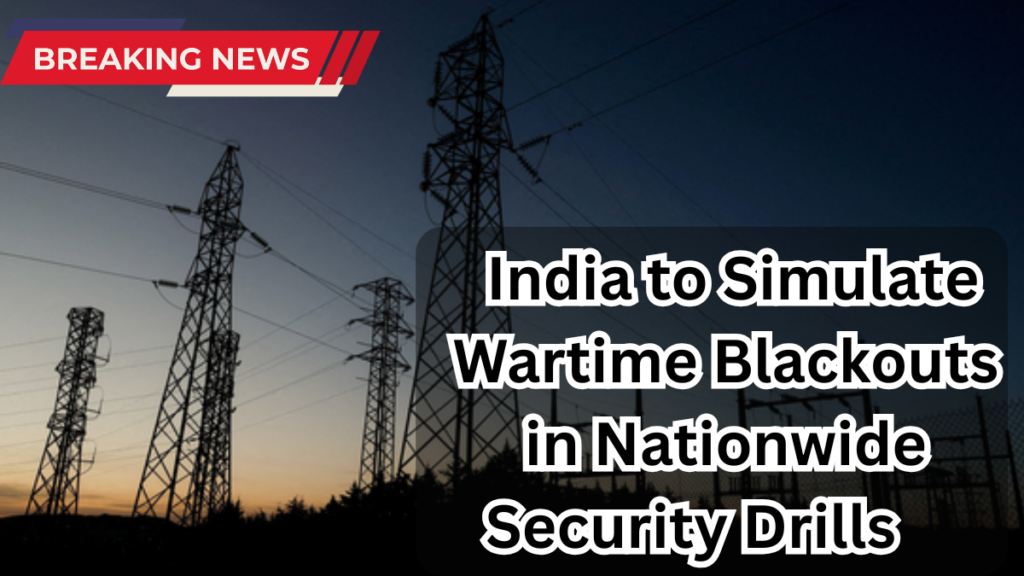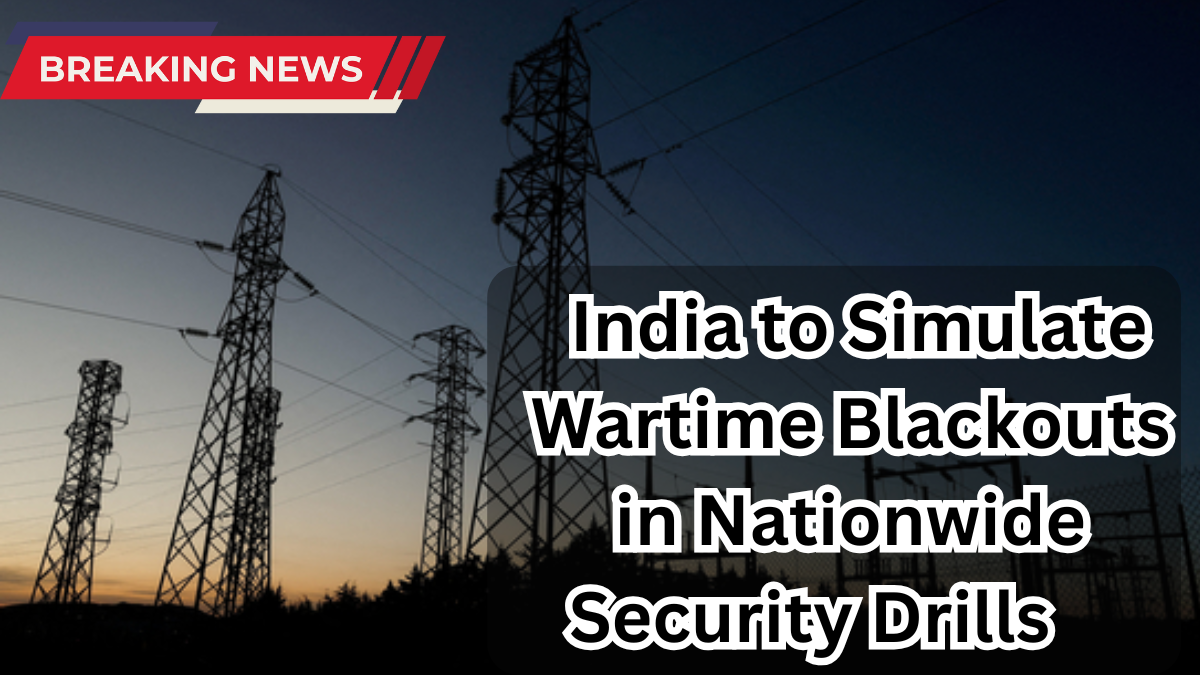India is stepping up its national security preparedness by organizing large-scale drills that include simulated wartime blackouts. At a time when modern warfare increasingly targets civilian infrastructure, this initiative is aimed at equipping both authorities and citizens to deal with potential crises.
Here’s a detailed look at what this means and how it will affect the general public.

What Are Wartime Blackouts?
Wartime blackouts involve switching off or significantly dimming all visible lights at night to make it harder for enemy aircraft or drones to spot and target cities. These measures were commonly used during World War II and are now being reintroduced by several countries as part of emergency preparedness.
Why Is India Conducting These Drills?
The government is taking cues from the evolving nature of global conflicts and increasing drone-based threats. The drills aim to test readiness and build awareness at all levels—from national to local.
Objectives of the Drills:
-
Strengthen civil defence awareness among citizens
-
Simulate real-time aerial threat scenarios
-
Test the resilience of power grids and emergency response systems
-
Enhance coordination between civil and military agencies
When and Where Will These Blackout Drills Take Place?
Although the government hasn’t released an official schedule, the drills are expected to roll out in phases, starting with sensitive and strategically important regions.
| Phase | Regions Covered | Likely Timeline |
|---|---|---|
| Phase 1 | Border states (e.g., Punjab, Rajasthan) | Mid-2025 |
| Phase 2 | Metro cities (Delhi, Mumbai, etc.) | Late 2025 |
| Phase 3 | Tier 2 and Tier 3 cities | Early 2026 |
What Should Citizens Expect?
Citizens will be informed in advance before any blackout is carried out. The exercises will be brief and focused on public awareness, not disruption.
You may be asked to:
-
Switch off all indoor and outdoor lights for a short period
-
Limit the use of vehicles, especially high-beam lights
-
Remain indoors and follow guidance from authorities
-
Keep emergency supplies handy
These blackouts are simulated drills, not responses to actual threats.
The Psychological Element: Preparing Minds, Not Just Systems
Apart from logistical preparedness, these exercises aim to prepare people mentally. Panic is one of the biggest challenges in crisis scenarios. Through familiarization, the government hopes to build a more confident and responsive civilian population.
Steps Being Taken by the Government
Several agencies, including the Ministry of Home Affairs and the Armed Forces, are involved in planning and execution. Key actions include:
-
Conducting training sessions for local police and disaster response teams
-
Assessing vulnerabilities in critical infrastructure
-
Issuing advisories to local bodies and residential communities
-
Launching public awareness campaigns via media and schools
How You Can Prepare for These Drills?
You don’t need to make drastic changes to your daily life, but small steps can go a long way in staying prepared:
-
Keep a flashlight and extra batteries at home
-
Maintain a charged power bank for your phone
-
Have a battery-operated radio for emergency broadcasts
-
Prepare a small emergency kit with water, medicines, and essentials
FAQs
1. Will these blackouts affect essential services like hospitals?
No. Essential services such as hospitals, emergency response centers, and police departments will remain fully operational, often with backup power systems in place.
2. How long will each blackout last?
Most drills will last between 15 to 30 minutes, just enough to simulate real conditions without significant inconvenience.
3. Is this based on any direct threat from another country?
While there’s no official mention of a specific threat, the drills are part of broader security measures in light of rising global tensions and advances in military technology.
4. Are citizens required to participate?
Currently, participation is voluntary. However, public cooperation is strongly encouraged to maximize the effectiveness of these drills.
Final Thoughts
These wartime blackout drills mark a major step in India’s approach to civil defence. They remind us that national security isn’t just about the armed forces—it’s a collective responsibility. By preparing today, India aims to build a safer, more resilient tomorrow.
Click here to learn more
